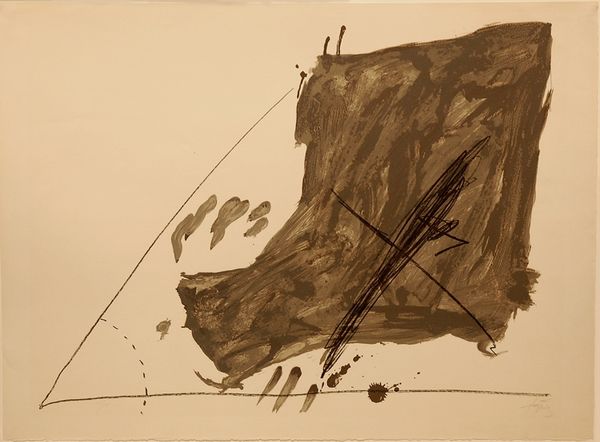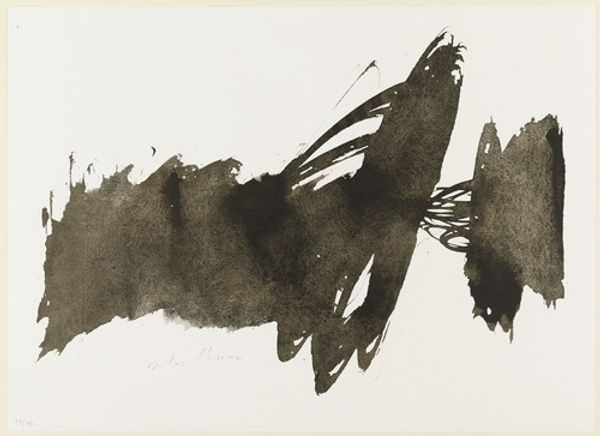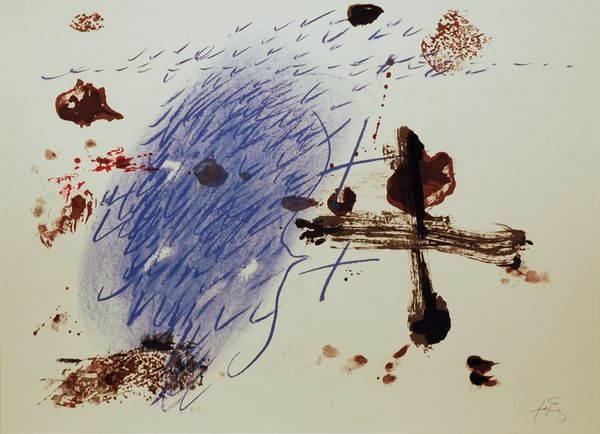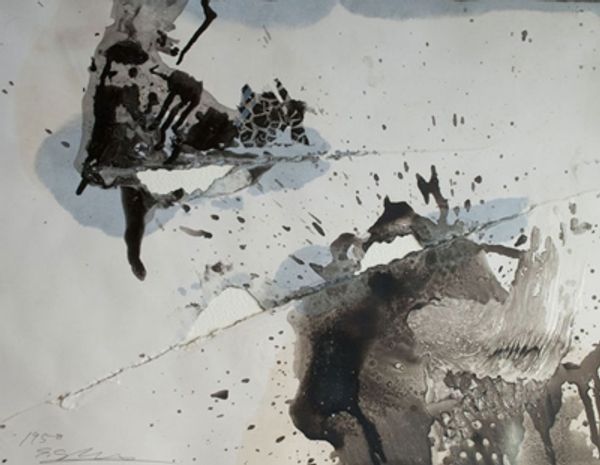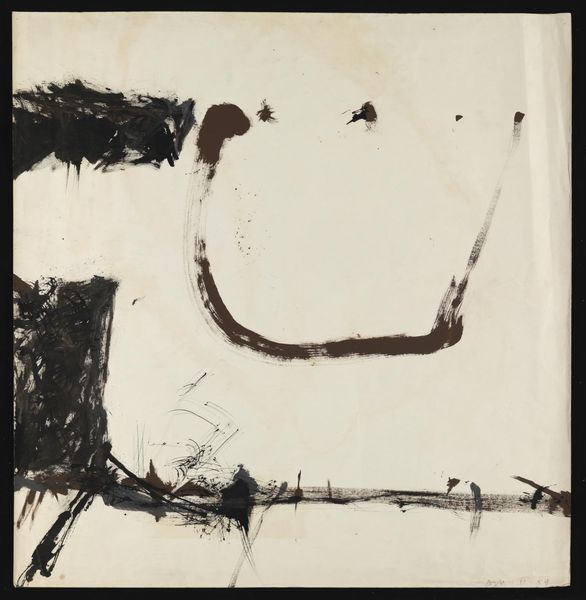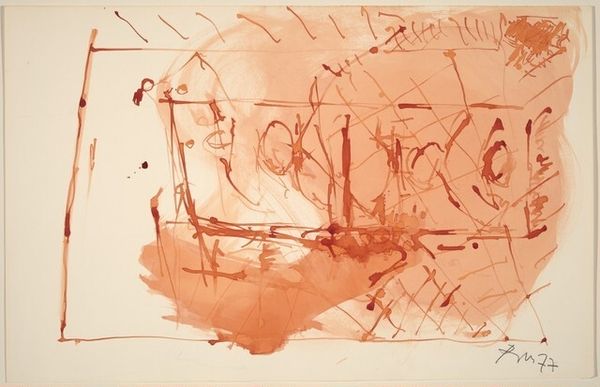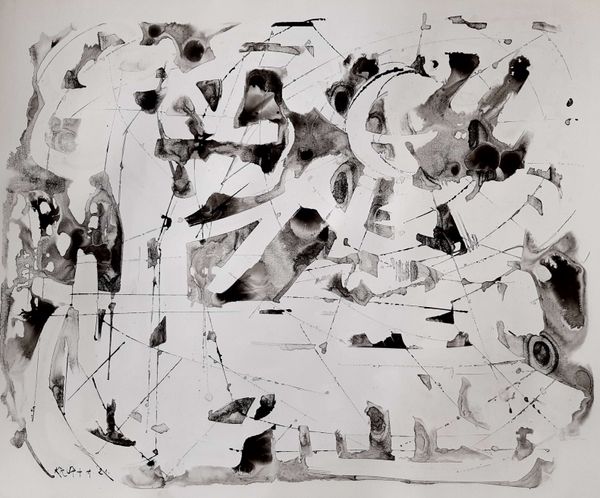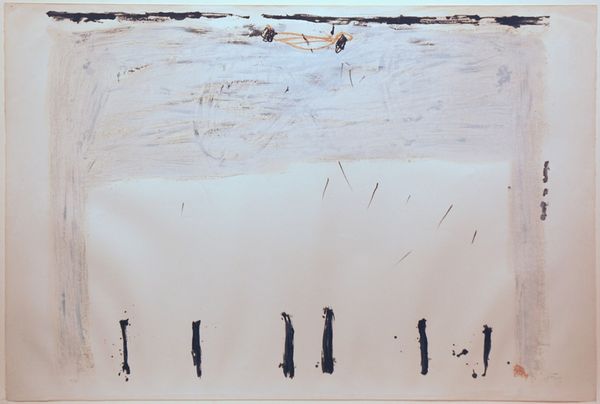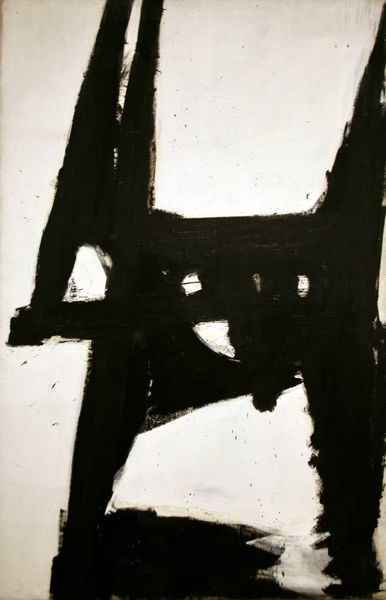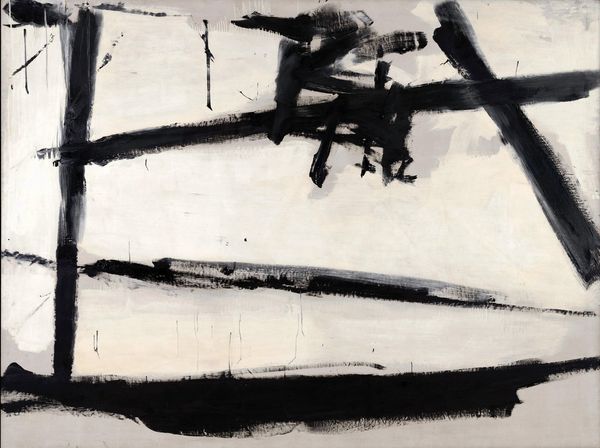
mixed-media, etching, ink
#
mixed-media
#
ink painting
#
etching
#
etching
#
ink
#
art-informel
#
abstraction
#
line
Copyright: Antoni Tapies,Fair Use
Curator: Antoni Tapies' "Carrés," created in 1967, blends etching and ink on paper. The piece epitomizes the Art Informel movement, showcasing a rejection of formal composition in favor of raw expression. What impressions does it stir in you? Editor: My first impression is one of starkness. There's a very minimal use of color, which gives it a sense of austerity. And that rough, dark blotch offsets the calculated grid, creating a distinct tension. It feels like an interruption. Curator: It is interesting that you pinpoint that perceived 'interruption'. Considering the sociopolitical climate of 1967—fraught with anti-war protests, civil unrest, and countercultural movements—could we view the blotch and the grid as visual metaphors? The grid representing established structures, while the amorphous stain signifies rebellion? Editor: Absolutely, the grid could certainly be read as a symbol of order and control, reflecting the restrictive societal norms that were being challenged at the time. Yet, there is something that suggests a far older order—perhaps a fragmented tic-tac-toe board, a ruin on which is written primal impulses. The ink appears violently layered, each mark pregnant with immediacy. Curator: That reading is astute, it invites us to think beyond the immediate context, layering interpretations as Tapies layered his materials. Art Informel itself emerged post-World War II. Many artists felt a complete disillusionment with traditional artistic expression. Tapies integrated found materials—earth, fabric—as a gesture of social commentary, a stark cry for re-evaluation of the role art could play. Editor: Yes, I see that echoed here in the seemingly spontaneous markings disrupting the severity of line and grid, the combination suggestive of subconscious or repressed elements. The "Carrés" title itself alludes to order, but the piece teeters on the edge of chaos, much like the cultural anxieties bubbling at that time. There’s even a resemblance to a veiled face—evocative of secrecy or the obscured. Curator: Ultimately, it's a piece that speaks to the complexities of its time, of the inherent human need for structure, and our equally powerful urge to dismantle and redefine it. Thank you for illuminating those intricacies with such depth and care! Editor: Thank you; reflecting on "Carrés" has sparked an intriguing reconsideration of our visual lexicon, prompting reflection on the durability of signs and our engagement with a turbulent era.
Comments
No comments
Be the first to comment and join the conversation on the ultimate creative platform.
